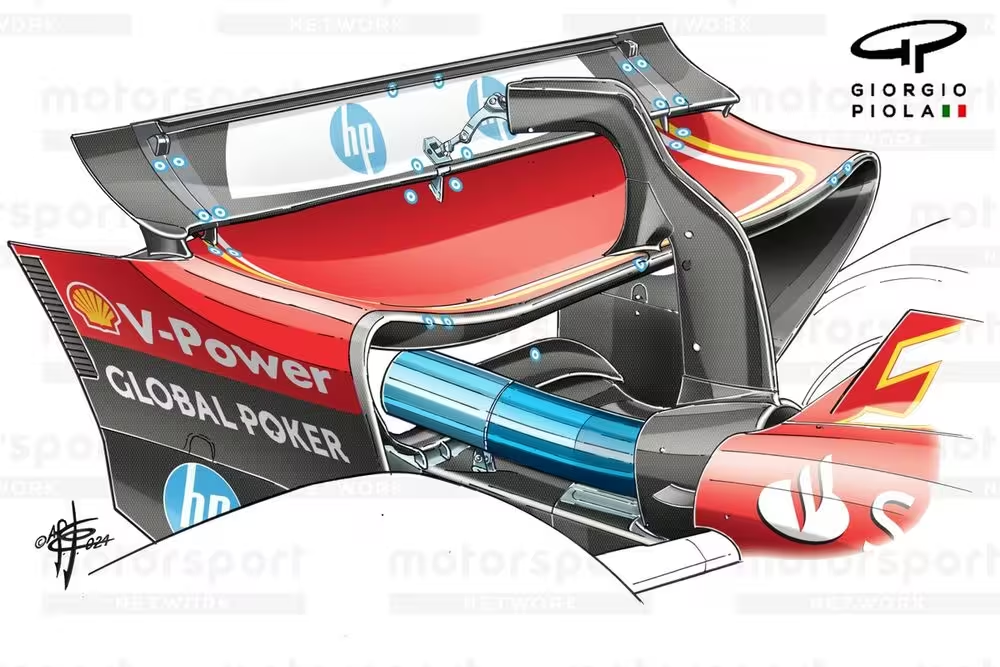McLaren has clarified that it has made modifications to its full range of rear wings ahead of the United States Grand Prix, following the recent ‘mini-DRS’ controversy.
The Woking-based team found itself at the centre of attention following the Azerbaijan GP after video footage of its rear wing flexing was broadcast.
The way that the upper element of the rear wing rotated back to help open up the slot gap led to the concept being swiftly labelled as ‘mini-DRS’.
While the rear wing passed all the FIA static load tests, its behaviour at high speed prompted discussions between the governing body and McLaren over the situation.
And, as part of that dialogue, McLaren said that it subsequently agreed to revise the low-drag wing that had been used in Baku to ensure that it did not flex in such a way going forward. This wing was only likely to ever return in Las Vegas though.
However, ahead of this weekend’s race in Austin, the issue became a talking point again as rumours swirled that the team had been asked to make further changes by the FIA.
The squad has denied this but has conceded that as part of ongoing dialogue, it has agreed to make changes to its entire range of wings, including the one that will be used in Austin.
It is understood that this involves modifications to the upper element to stop it from flexing, as well as a narrowing of the slot gap.
A McLaren spokesperson said: “As previously mentioned, McLaren proactively offered to make some minor adjustments to our rear wing following the Azerbaijan GP.
“We have made minor adjustments to all our rear wings since Baku to varying extents to ensure no further issues in this area.”
Ferrari SF-24 rear wing, US GP
Photo by: Giorgio Piola
The tweaks that McLaren has made to its rear wings come on a weekend when the FIA continues to take a strict approach to monitoring rear wing flexing.
As spotted in the pitlane, teams now appear to be fitted with an increased number of reference dots placed on various sections of the rear wing, which are used by the FIA to evaluate how much flexing is taking place.
These dots act as a reference so that any flexion can be more easily spotted in the footage captured by the rearview camera.
It is also understood that higher resolution cameras are going to be used in the rear-facing camera position to increase fidelity and provide the necessary detail required.
This is a step up from the approach taken at the Belgian Grand…
Click Here to Read the Full Original Article at Autosport.com – Formula 1 – Stories…

